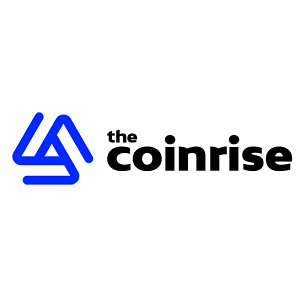Stablecoin Regulation: South Korea’s Crucial Review Impacts Digital Finance
8 min read
BitcoinWorld Stablecoin Regulation: South Korea’s Crucial Review Impacts Digital Finance The crypto world is buzzing with significant news from South Korea, a nation consistently at the forefront of digital asset adoption and regulation. A pivotal review is underway that could redefine how stablecoins, the digital currencies pegged to traditional assets like the US dollar, are treated under the law. Specifically, South Korea is exploring the application of its stringent Foreign Exchange Transactions Act to stablecoins such as Tether’s USDT. This isn’t just a technical legal adjustment; it’s a move with profound implications for how you send, receive, and interact with digital money across borders. Understanding this evolving landscape of stablecoin regulation is crucial for anyone involved in the crypto space. What’s Driving South Korea’s Stablecoin Regulation Push? According to Munhwa Ilbo, the South Korean government, through its Ministry of Economy and Finance (MOEF), has launched a comprehensive research project. The core of this initiative is to examine potential legal violations and propose regulatory improvements related to stablecoins. The primary focus is on applying the existing Foreign Exchange Transactions Act, a law traditionally used to govern the flow of conventional foreign currencies like the U.S. dollar or Japanese yen. So, why this sudden emphasis on stablecoins? Their rapid growth and increasing use in cross-border transactions have caught the attention of regulators worldwide. Unlike volatile cryptocurrencies, stablecoins aim to maintain a stable value, making them attractive for remittances, payments, and international trade. However, this stability also means they can function similarly to foreign currencies, potentially bypassing traditional financial rails and existing oversight mechanisms. This situation presents both opportunities and challenges for financial stability and national security. The MOEF’s review suggests a proactive approach to: Ensure Financial Stability: By bringing stablecoins under existing foreign exchange laws, authorities aim to monitor large capital flows and prevent potential systemic risks. Combat Illicit Activities: Stablecoins, like any financial instrument, can be misused for money laundering or terrorist financing. Applying foreign exchange laws could enhance Anti-Money Laundering (AML) and Know Your Customer (KYC) compliance. Protect Investors and Consumers: A clear legal framework provides greater clarity and protection for individuals and businesses using stablecoins. Prevent Regulatory Arbitrage: By treating stablecoins similarly to foreign currencies, South Korea seeks to close potential loopholes where digital assets might be used to circumvent existing financial regulations. This strategic move highlights a global trend where governments are grappling with how to fit decentralized digital assets into centralized financial frameworks, ensuring that innovation doesn’t outpace necessary oversight. The Potential Impact of Stablecoin Regulation on Your Transactions The most direct implication of this review, as highlighted by experts, is the potential for new remittance and receipt limits for overseas transfers involving stablecoins, similar to those already in place for traditional foreign currencies. Currently, many stablecoin transactions, especially peer-to-peer, operate with fewer direct restrictions or reporting requirements than conventional bank transfers. If stablecoins are reclassified, this could change significantly. Here’s a comparative look at how stablecoin regulation might reshape your cross-border transactions: Aspect Current Stablecoin Use (Pre-Regulation) Potential Future (Post-Regulation) Cross-border Transfers Often seen as ‘crypto-to-crypto’, with less direct scrutiny from foreign exchange laws. Fewer explicit limits for peer-to-peer transactions. Subject to foreign exchange limits, reporting requirements for large transactions, and potentially extensive documentation, similar to bank wires. Regulatory Oversight Varied, often under general cryptocurrency laws or limited to specific exchange operations. Under strict foreign exchange laws, leading to increased scrutiny of stablecoin service providers and individual transactions. Transaction Limits Generally higher or non-existent for peer-to-peer transfers, depending on the platform and jurisdiction. Potential for lower caps without extensive KYC/AML documentation, and a requirement for official channels for larger sums. User Experience Often faster, potentially cheaper, and more direct for international transfers compared to traditional banking. Could involve more steps, potentially higher fees (due to compliance costs), and slower processing times due to increased regulatory checks. Innovation & Adoption Encouraged by a relatively less restrictive environment, fostering new use cases. May face hurdles due to increased compliance burden, potentially slowing down the development of new stablecoin-based financial products. For individuals and businesses frequently engaging in cross-border transactions using stablecoins, understanding these potential shifts is paramount. It may necessitate adapting current practices to comply with future requirements, such as providing more documentation for transfers or utilizing regulated service providers. Are All Stablecoins Affected by This Stablecoin Regulation? The Munhwa Ilbo report specifically mentions Tether’s USDT, which is the largest stablecoin by market capitalization and widely used globally. Given its prominence, it’s a logical starting point for any regulatory review aiming to capture significant market activity. However, it’s highly probable that if the Foreign Exchange Transactions Act is applied to USDT, its principles would extend to other fiat-backed stablecoins as well. Stablecoins like USD Coin (USDC), Binance USD (BUSD), and even decentralized stablecoins like Dai (DAI), which often maintain a peg to fiat currencies, could fall under similar scrutiny. The key factor here is their function as a medium for value transfer pegged to a national currency, making them analogous to foreign currency. The intent of the regulation is likely to prevent regulatory arbitrage, where a digital asset might be used to bypass rules that apply to its traditional counterpart. What about algorithmic stablecoins? These stablecoins, which maintain their peg through complex algorithms and collateral rather than direct fiat reserves, might be viewed differently. While they still aim for price stability, their underlying mechanics are distinct. They might be subject to other existing or forthcoming cryptocurrency regulations rather than the Foreign Exchange Transactions Act directly, though this remains an area of evolving legal interpretation. Ultimately, the broader goal of this stablecoin regulation is to establish a comprehensive framework that covers all digital assets functioning as substitutes for traditional currencies, ensuring consistency in financial oversight and consumer protection. Navigating the Challenges and Opportunities in Stablecoin Regulation South Korea’s bold move to bring stablecoins under its foreign exchange law presents both significant challenges and unique opportunities for the crypto industry and the broader financial landscape. Challenges: Compliance Burden: For stablecoin issuers, exchanges, and businesses facilitating stablecoin transactions, the new regulations could impose substantial compliance costs related to reporting, licensing, and enhanced KYC/AML procedures. Innovation Stifling: Overly stringent regulations might discourage innovation in the stablecoin space, potentially driving talent and projects to more lenient jurisdictions. Driving Activity Offshore: If compliance becomes too onerous, some users and businesses might opt for unregulated offshore platforms, which could ironically reduce transparency and oversight. Complexity of Enforcement: The decentralized nature of some stablecoins and the global reach of the crypto market pose inherent challenges for national regulators in enforcing domestic laws. Opportunities: Increased Legitimacy and Institutional Adoption: Clear and robust stablecoin regulation can provide the legal certainty that institutional investors and traditional financial institutions need to engage with stablecoins, fostering broader adoption. Enhanced Consumer Protection: By bringing stablecoins under existing financial laws, consumers gain greater protection against fraud, mismanagement, and market manipulation. Clearer Legal Frameworks: Businesses operating in South Korea will benefit from a more defined legal landscape, reducing uncertainty and encouraging long-term investment and development. Global Precedent: South Korea, being a significant player in the crypto space, could set a global precedent for how nations approach stablecoin regulation, influencing policies in other major economies. Actionable Insights for Users and Businesses: Stay Informed: Regularly monitor official announcements from the MOEF and financial regulators regarding the progress and specifics of this review. Review Your Practices: If you conduct significant cross-border stablecoin transactions, begin to assess how potential limits or reporting requirements might impact your operations. Engage with Regulated Entities: Prioritize using exchanges and service providers that are committed to compliance and operate under South Korean financial regulations. Diversify: Consider diversifying your stablecoin holdings or exploring alternative remittance methods if specific stablecoins or platforms become heavily restricted. This evolving regulatory environment demands adaptability and a proactive approach from all participants in the digital asset ecosystem. This move by South Korea is a powerful indicator of how governments worldwide are grappling with the rapid evolution of digital assets. While the full implications of this stablecoin regulation are yet to unfold, it undeniably marks a critical juncture for the future of digital finance, urging both innovators and users to adapt to an increasingly regulated landscape. The outcome of this review will not only shape South Korea’s crypto future but could also provide a blueprint for other nations seeking to integrate digital currencies into their existing financial systems. Frequently Asked Questions (FAQs) 1. What is South Korea’s Foreign Exchange Transactions Act? The Foreign Exchange Transactions Act is a comprehensive law in South Korea designed to regulate and manage transactions involving foreign currencies, international payments, and capital flows. Its primary purpose is to ensure the stability of the foreign exchange market, prevent illicit capital outflow, and protect the national economy. 2. Why is South Korea focusing on stablecoins now? South Korea is focusing on stablecoins due to their increasing use in cross-border transactions and their potential to function as substitutes for traditional foreign currencies. Regulators are concerned about potential risks such as money laundering, capital flight, and consumer protection, which may not be adequately addressed under existing cryptocurrency laws. 3. How will this affect using stablecoins for international transfers? If stablecoins are classified under the Foreign Exchange Transactions Act, international transfers involving them could become subject to new limits, reporting requirements, and documentation similar to traditional bank transfers. This may mean more scrutiny and potentially slower processing times for large transactions. 4. Will all stablecoins be treated the same way? While the initial review mentions Tether’s USDT, it’s highly probable that other fiat-backed stablecoins (e.g., USDC, BUSD) that maintain a peg to national currencies will also fall under similar regulations. Algorithmic stablecoins might be treated differently, potentially under other crypto-specific laws, but this remains subject to ongoing legal interpretation. 5. What are the potential benefits of this stablecoin regulation? The potential benefits include increased legitimacy for stablecoins, which could lead to greater institutional adoption, enhanced consumer protection through clearer legal frameworks, and better oversight to prevent illicit financial activities. It could also provide much-needed clarity for businesses operating in the stablecoin space. 6. What should stablecoin users in South Korea do? Stablecoin users in South Korea should stay informed about regulatory updates, review their current transaction practices, and consider using regulated exchanges and service providers. Preparing for potential changes in documentation or transaction limits for international transfers is also advisable. Did you find this deep dive into South Korea’s evolving stablecoin regulation insightful? Share this article on your social media channels to help others understand these critical developments in the crypto world! Your insights and discussions are vital for fostering a well-informed community. To learn more about the latest stablecoin regulation trends, explore our article on key developments shaping stablecoin adoption and future policy. This post Stablecoin Regulation: South Korea’s Crucial Review Impacts Digital Finance first appeared on BitcoinWorld and is written by Editorial Team

Source: Bitcoin World



